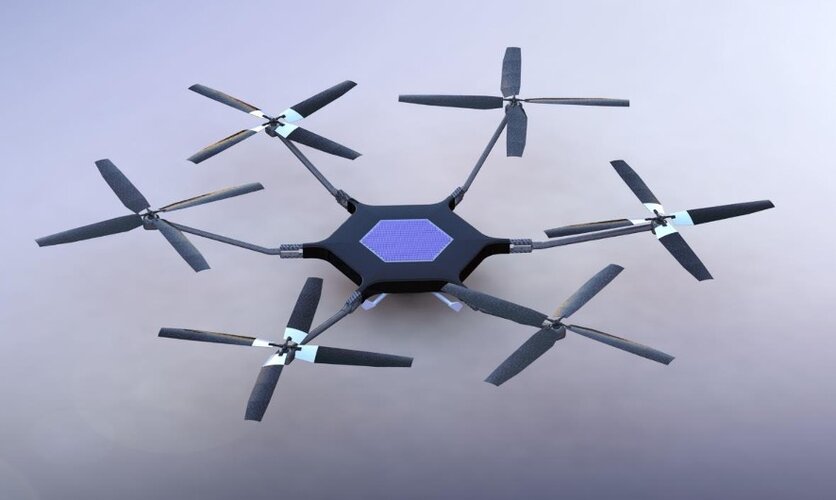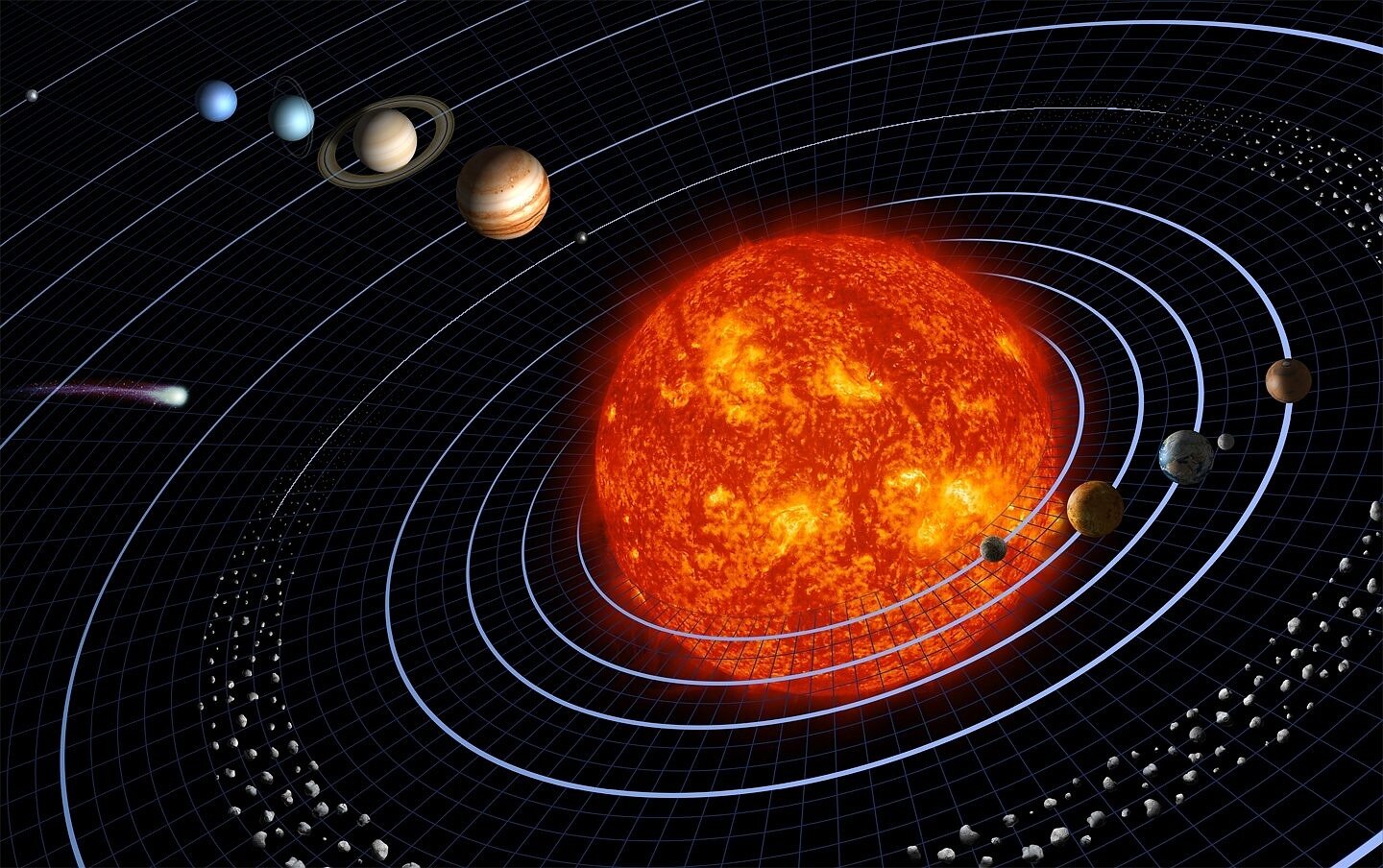- Joined
- 21 January 2015
- Messages
- 10,811
- Reaction score
- 12,607
A new study has uncovered a mechanism that could solve a long-standing mystery about decaying planetary orbits around stars like our Sun.
Related paper:
A new study has uncovered a mechanism that could solve a long-standing mystery about decaying planetary orbits around stars like our Sun.

Planetary scientists at the University of Colorado Boulder have discovered how Venus, Earth’s scalding and uninhabitable neighbor, became so dry.
The new study fills in a big gap in what the researchers call “the water story on Venus.” Using computer simulations, the team found that hydrogen atoms in the planet’s atmosphere go whizzing into space through a process known as “dissociative recombination”—causing Venus to lose roughly twice as much water every day compared to previous estimates.
In a recent publication, the experts offer a new explanation for this behavior. They propose that a “natal kick” – a displacement during formation due to asymmetric mass loss observed in white dwarfs – might be responsible for the dynamics that lead to these celestial bodies consuming nearby planetesimals.
The team’s computer simulations showed that in 80% of scenarios, this kick resulted in the elongation and alignment of the orbits of comets and asteroids within 30 to 240 astronomical units of the white dwarf. Remarkably, about 40% of the consumed planetesimals originated from retrograde, or counter-rotating, orbits.

Researchers using NASA’s James Webb Space Telescope may have detected atmospheric gases surrounding 55 Cancri e, a hot rocky exoplanet 41 light-years from Earth. This is the best evidence to date for the existence of any rocky planet atmosphere outside our solar system.
Renyu Hu from NASA’s Jet Propulsion Laboratory (JPL) in Pasadena, California, is lead author on a paper published today in Nature. “Webb is pushing the frontiers of exoplanet characterization to rocky planets,” Hu said. “It is truly enabling a new type of science.”
The team thinks that the gases blanketing 55 Cancri e would be bubbling out from the interior, rather than being present ever since the planet formed. “The primary atmosphere would be long gone because of the high temperature and intense radiation from the star,” said Bello-Arufe. “This would be a secondary atmosphere that is continuously replenished by the magma ocean. Magma is not just crystals and liquid rock; there’s a lot of dissolved gas in it, too.”

As the article says absolutely no chance of life as rocky is a poor choice of words as the surface is probably a molten sea of magma.If true Flyaway this will quite possibly be the discovery of the century so far. Next step try to find out if 55 Cancri e has any prospects of alien life on the surface and to see how much Oxygen and Nitrogen the atmosphere has.



That settles it.The system sounds like a music box if you run the video.

Six planets in resonance in the constellation 'Coma Berenices'
Most people associate octaves, fifths and fourths with harmonic sounds whose frequencies are in a well-defined, whole-number ratio – 2:1 for the octave, 3:2 for the fifth and 4:3 for the fourth.www.dlr.de






























An international team led by researchers from the EXOTIC Laboratory of the University of Liège, in collaboration with MIT and the Astrophysics Institute in Andalusia, has just discovered WASP-193b, an extraordinarily low-density giant planet orbiting a distant Sun-like star.
This new planet, located 1,200 light-years from Earth, is 50% larger than Jupiter but seven times less massive, giving it an extremely low density comparable to that of cotton candy. "WASP-193b is the second least dense planet discovered to date, after Kepler-51d, which is much smaller," explains Khalid Barkaoui, a Postdcotral Researcher at ULiège's EXOTIC Laboratory and first author of the article published in Nature Astronomy. Its extremely low density makes it a real anomaly among the more than five thousand exoplanets discovered to date. This extremely-low-density cannot be reproduced by standard models of irradiated gas giants, even under the unrealistic assumption of a coreless structure.”


Astronomers have discovered an Earth-size planet orbiting an ultracool red dwarf star similar in size to Jupiter. The red dwarf, located some 55 light-years away, is 100 times less bright than the sun and exhibits half the temperature of our star.
This new extrasolar planet, or exoplanet, is named SPECULOOS-3 and represents just the second time astronomers have discovered a planetary system around a red dwarf star, the first being the Trappist-1 system.

Social media became flooded late Saturday with viral videos of a large blue-green fireball streaking across the sky over Portugal, lighting up the night. Now the European Space Agency (ESA) says the meteor appears to have been a small part of a bigger, icy body impacting Earth’s atmosphere.
“It appears that this object was a small piece of a comet,” ESA wrote on X Sunday. “We estimate that it flew over Spain and Portugal travelling at ~45 km/s before burning up over the Atlantic Ocean at an altitude of ~60 km.”

 www.forbes.com
www.forbes.com
A surprisingly low amount of methane and a super-sized core hide within the cotton candy–like planet WASP-107 b.
The revelations, based on data obtained by the James Webb Space Telescope, mark the first measurements of an exoplanet's core mass and will likely underpin future studies of planetary atmospheres and interiors, a key aspect in the search for habitable worlds beyond our solar system.

By 4.3 billion years ago, Earth’s crust may have already looked much like it does today. This is the earliest time some researchers think the plates of our planet’s crust began to slide against, over, and under each other in a process known as plate tectonics. How the very first instance of subduction—a key part of plate tectonics—occurred is still debated.
In a new study, Yuan et al. find evidence tracing the first subduction event to the same impact that created our Moon. The giant impact hypothesis theorizes that early in its history, Earth was struck by another planetary body about the size of Mars, sending a large chunk of rock—the Moon—into orbit.

 eos.org
eos.org
Using the Keck II telescope in Hawaii, astronomers have observed a nearby brown dwarf known as HD 33632 Ab. Results of the observational campaign, presented in a paper published May 14 on the pre-print server arXiv, provide more insights into the properties of this substellar object and its atmosphere.

Previously unpublished photos of Mars' moon Phobos hint that the mysterious satellite may actually be a trapped comet — or perhaps just a piece of one, along with its twin moon Deimos.
Taken by high-resolution cameras onboard the Mars Express spacecraft, a European Space Agency (ESA) orbiter that has studied Mars and its moons since 2003, these 300-odd images exquisitely document Phobos' features. That includes the 9-kilometer-wide (5.6-mile-wide) Stickney crater, Phobos' largest landmark.
Fornasier and her colleagues used the snapshots to analyze the intensity of sunlight Phobos reflected from different angles. This technique, called photometry, allowed them to determine how much light Phobos reflected when the sun was right in front or at an offset angle.
The study's findings have implications for Deimos, too. Fornasier noted that if Phobos was once a comet, Deimos may have been one as well. In fact, based on the study, her team suggests the two moons may have once been joined together as a single bilobed comet that was trapped and eventually torn apart by Mars' gravity. In other words, Mars’ twin moons may actually be two halves of a single whole.

The discovery of a planet similar to Venus around a star in the neighborhood of the solar system raises hopes that astronomers may someday unlock the secret to why life appeared on Earth.
The planet has a radius that is only 4% smaller than Earth's radius, and is less than 3.9 times the mass of Earth. Gliese 12 b receives 1.6 times more radiation from its host star than Earth receives from the sun. For comparison, Venus receives 1.9 times more radiation than Earth.
Based on this data, the team believes that Gliese 12 b is an "evil twin," more like Venus than like Earth. But they cannot rule out the possibility that Gliese 12 b is an "Earth twin" with liquid water on its surface. Further observations will determine if Gliese 12 b is an "evil twin" or an "Earth twin."

Using NASA's Transiting Exoplanet Survey Satellite (TESS), an international team of astronomers has discovered a new Saturn-mass planet orbiting a solar-type star known as TOI-2447. The finding was reported in a research paper published May 12 on the pre-print server arXiv.
The researchers also collected strong evidence for additional planets orbiting TOI-2447. They identified a transit signal in the NGTS data not originating from TOI-2447, but most likely from some other transiting object. Moreover, they found evidence in the radial-velocity data from the CHIRON high-resolution echelle spectrometer, suggesting the presence of an outer planet with an orbital period of around 150 days. However, additional observations are needed in order to confirm the planetary nature of these signals.


Eyes on the sky, people: Comet C/2023 A3 (Tsuchinshan–ATLAS) has a good chance of getting bright enough to be visible to the naked eye in the coming months. It is currently visible only to telescopes, but it is still quite a distance away from the Sun. It has time to get brighter, and could even get as bright as Venus, the brightest planet in the night sky, come October.
Its closest passage from the Sun will take place on September 27 and it will be 58.6 million kilometers (36.4 million miles) from our star. That’s a similar distance to Mercury. Then a few weeks after that on October 12, the comet will perform its closest pass to Earth, roughly 70.6 million kilometers (43.9 million miles) away.

Considering that many politicians campaign - and win - on denial of evolution, I would be at all surprised if flat earthers appear in government soon.Astronomers get it from all sides now:
Greens who want us in caves
Elon spewing comsats out right and left.
Islanders who won’t let them build scopes.
Fiscal hawks who want to cut their budgets
Magma might be roiling and bubbling just underneath the surface of Venus, even as you read these words – and possibly breaking through.
A new analysis of data collected over the space of just eight months in the early 1990s by the Magellan orbiter shows changes in the Venusian surface that can best be attributed to volcanism that took place during the Magellan mission, astronomers have determined.
With this information in hand, the researchers then set about calculating the volume of volcanic output. They found that Sif Mons has a flow rate of 25.2 and the Niobe Planitia of 37.8 cubic kilometers per year.
Over the past 180 million years' Earth's average volcanic flow rate has been estimated at 26–34 cubic kilometers per year.
This suggests that Venus' volcanic output might be of the same order of magnitude as that estimated for Earth.



